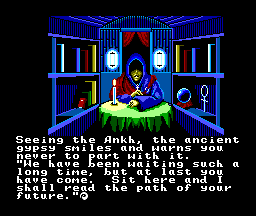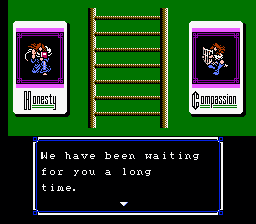Introduction
In Ultima 4: Quest of the Avatar you control a hero and a team of eight adventurers in a quest across the fantasy world of Britannia. During the game, the party members can progressively acquire several weapons and armors, but also many other items and a wide array of spells.
Ultima 4 is a role-playing video game. Specifically, it belongs to the sub-genre of American-style RPVGs.
Three aspects that can define the genre of RPGs are listed here, and they apply to Ultima 4 as well:
- Text is an essential part of the game, and the characters have to talk and interact with non-evil characters to proceed in the adventure;
- There are permanent upgrades, in the form of enhancements of the various attributes of the characters (attack, strength, magic etc.);
- There is freedom of exploration, all the areas are connected by an "overworld", and areas that have been previously cleared can usually be re-visited; in other words, the game is non-linear.
Japanese-style RPVG focus more on the plot, while American-style RPVG like Ultima 4 focus more on exploration and "body-building" of the characters. Nevertheless, all three aspects are present in every RPG.
Notable ports
Ultima 4 was ported on different systems and consolles.
| Original version | (1985) Apple II |
|---|---|
| Most popular port | (1985) MS-DOS |
| Most advanced ports | (1985) Amiga (1990) Sega Master System |
| Remake | (1989) NES |
| Fan-made upgrade | (2001) Upgrade patch for MS-DOS port |
- The Sega Master System port is a faithful port with enchanced graphics, except for the dungeons, where the first-person was replaced by an overhead view.
- The Famicom/NES remake features even more enhanced graphics (in Japanese style), and first-person view in the dungeons, but the dialogue system was simplified and the text strongly shortened. The Japanese version features many more inhabitants in the town, with longer dialogue.
Comparison screenshots
 |
 |
 |
 |
Similar games
- Ultima 5 and Ultima 6, that together with Ultima 4 constitute the Age of Enlightment trilogy;
- Ultima 3, Ultima 7 and Ultima 7 Part 2, where the player still controls a team of heroes.